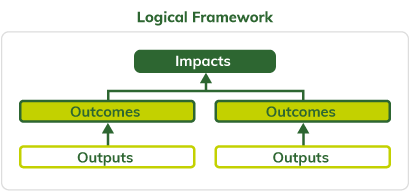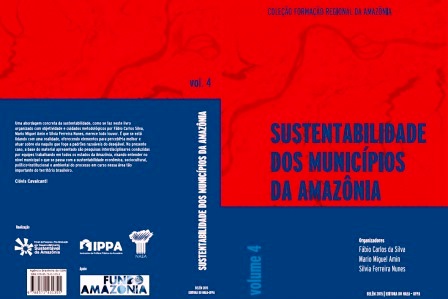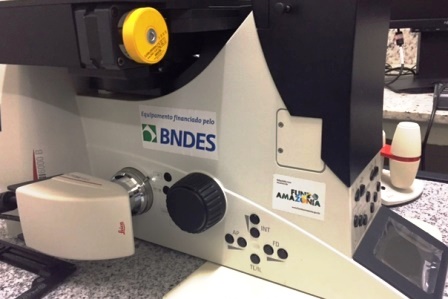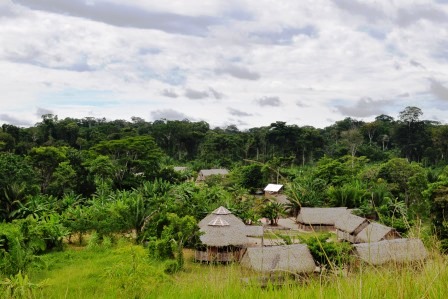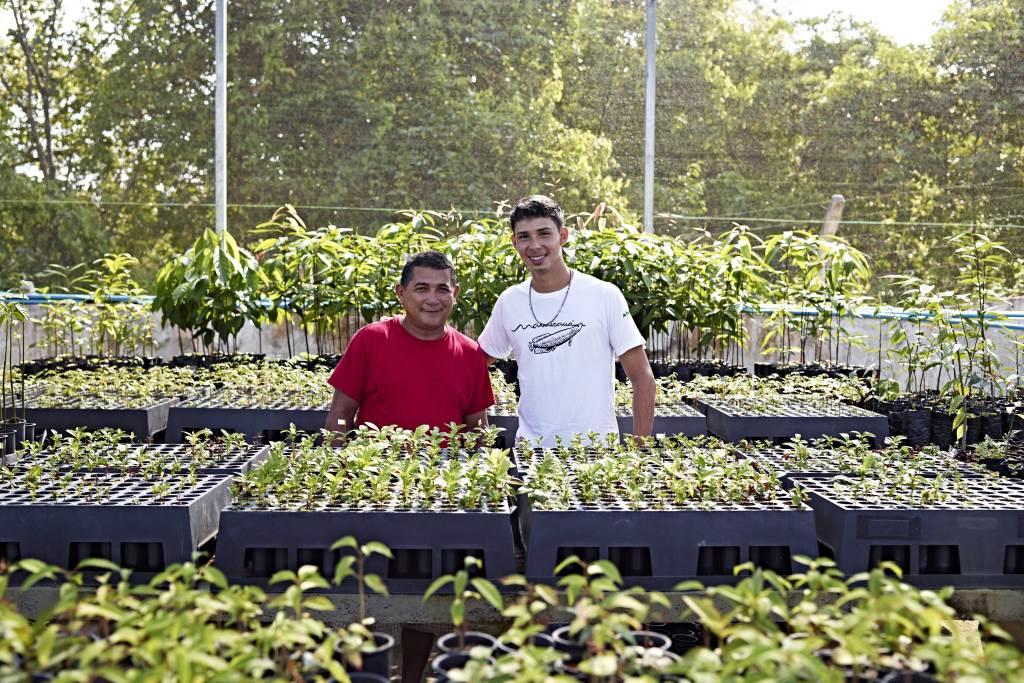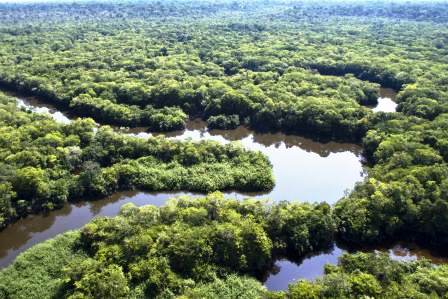Institutional and administrative aspects
The project did not foster the formalization of cooperative actions or institutional links. However, the Municipal Environment and Tourism Department of Marcelândia enjoyed a significant amount of help to execute the project. The Municipal Agriculture Department was a partner, lending staff to assist in restoration activities and technical assistance to farmers. The Municipal Education Department also cooperated with the project by promoting a drive among public school students to collect seeds that were used in the production of seedlings. In addition, the ICV, a third-sector organization operating in the region, provided support through its geotechnology team to identify and select the springs that received support from the Amazon Fund.
Indicators of results and impacts
The project’s activities contributed to the results of the “sustainable production” (1) and “monitoring and control” (2) components of the Amazon Fund Logical Framework.
Sustainable Production Component (1)
Outcome 1.4: Riparian woodlands of fifty springs of the Manissauá-Missu River sub-basin in Marcelândia recovered, ensuring the continued supply of water in the region and environmental compliance of farms benefited by the project.
The main indicators agreed upon to monitor this outcome were:
- Number of seedlings produced and distributed (product indicator):
In the last year of the project the municipality of Marcelândia produced 125,000 seedlings in its nursery and distributed 85,000, a 1,600% increase in the number of seedlings distributed by the municipality compared to 2012. These seedlings were intended both for the springs being recovered under the project and for the restoration of areas of other farmers in the municipality.
- Number of farms that adhered to the recovery of degraded areas registered with CAR (product indicator):
This indicator aimed to register fifty farms, to recover fifty springs. By the end of the project the goal of fifty springs was reached, but with the adherence of 37 farms in the municipality of Marcelândia.
- Area of riparian woodland recovered (impact indicator):
Recovery was initiated in 38.25 hectares in the fifty springs supported by the project. The original goal of this indicator was 157 hectares, since it provided for a recovery radius of one hundred meters from the water source. After the new rules of the Forest Code and the amendment of the Mato Grosso environmental legislation, the preservation radius around springs was lowered to fifty meters, which resulted in the reduction of the area under recovery, without prejudice to environmental compliance regarding the recovery of riparian woodlands of springs.
Monitoring and Control Component (2)
Outcome 2.1: Municipal Environment and Tourism Department of Marcelândia structured and modernized.
The main indicators agreed upon to monitor this outcome were:
- Increase of the annual budget executed by the Municipal Environment and Tourism Department of Marcelândia (impact indicator):
At the outset of the project in 2013, the department’s budget was R$ 248,000, and in 2016 it was R$ 460,000, an increase of 86%. However, it should be noted that in 2015, the amount allocated to the municipal environmental body reached R$ 788,000.
Lastly, annual deforestation in the municipality of Marcelândia was also monitored, from 2012, the base year immediately prior to the release of resources from the Amazon Fund, until 2016, the last year for which INPE data on deforestation are available by municipality in the Brazilian Amazon region (The municipality of Marcelândia has a total area of 12.295 km2).
A substantial increase in deforestation is observed in the project implementation period, which runs counter to the desired effect. This increase occurred despite the activities developed by the project, which can be explained by the reduced scale of supported initiatives, which were insufficient to counteract the vectors of deforestation.
| Year |
Annual deforestation (km2) |
Accumulated deforestation (km2) |
Accumulated deforestation as % of municipality area |
| 2012 |
12,4 |
3.456 |
28.11 |
| 2013 |
36,8 |
3.492 |
28.41 |
| 2014 |
35,3 |
3.528 |
28.69 |
| 2015 |
44,9 |
3.573 |
29.06 |
| 2016 |
55.4 |
3.628 |
29.51 |
Source: Prodes/Inpe
Notwithstanding this increase, it is observed that deforestation is at a much lower level compared to previous years, such as 2008 (178.2 km2), the year in which Marcelândia was included in the list of key municipalities for action to combat deforestation.
Risks and lessons learned
Despite achieving results, the project with the municipality of Marcelândia was hindered by a number of execution setbacks and its term was extended from 18 to 60 months.
One possible strategy to scale up Amazon Fund support for municipalities would be to support the institutional strengthening of municipal environmental bodies by decentralizing state environmental management, as this allows support to be more comprehensive and possibly more effective.
Recovery of degraded areas can be done through nongovernmental organizations, which have greater freedom to hire skilled labor and purchase the necessary inputs. Lastly, this project showed that the implementation of increased action to combat deforestation does not alone ensure actual reduction, given the limited scale of supported initiatives vis-à-vis existing anthropogenic pressure that causes deforestation.
Sustainability of results
The project contributed to improve working conditions and public services at the Municipal Environment and Tourism Department of Marcelândia, the department’s budget was increased in recent years and the municipality is expected to qualify to execute environmental management at local level, which may increase its sources of income through licensing fees and fines and, consequently, sustain long-term action by the environmental body.
The springs under recovery are permanent preservation areas (APP) which legally cannot suffer any further damage, and therefore must be consolidated in the local landscape, contributing to the legal compliance of farms and providing positive ecosystem services for the region.
As a result of the project, a permanent program for the recovery of springs was created. An agreement was signed with the District Prosecutor’s Office of Marcelândia for part of the proceeds from the criminal prosecution of environmental crimes to be allocated to the Municipal Environmental Fund for use in projects to recover degraded areas.


